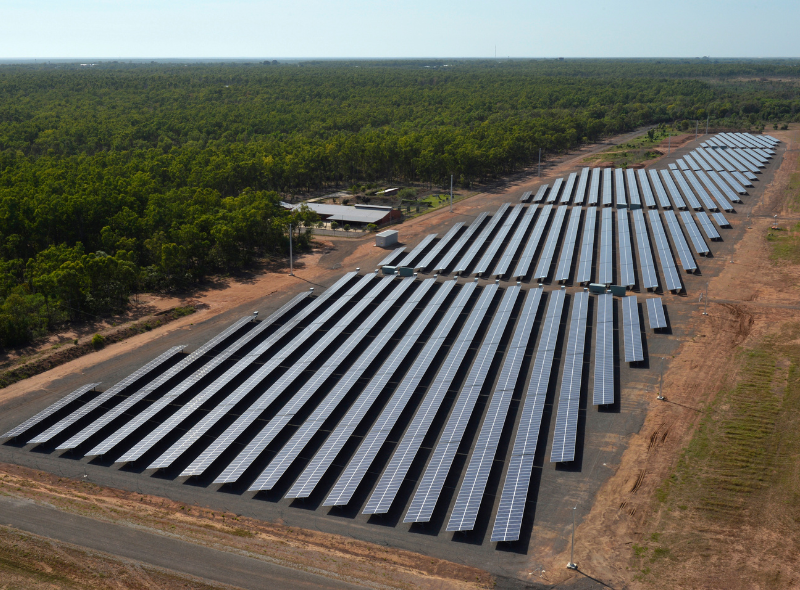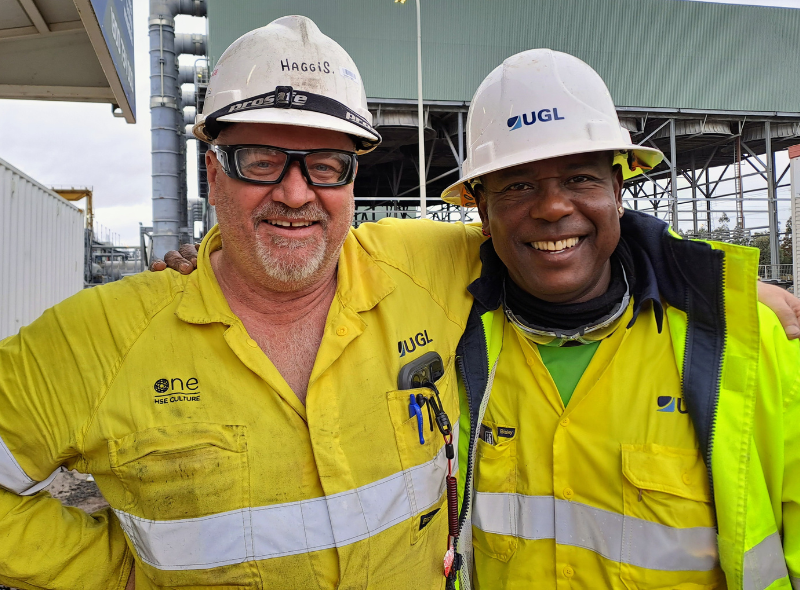UGL provided the design, supply and construction (EPC) services for a 4MWDC Solar Farm Stage 1 and an extension of 1.5MW (Stage 2) at Darwin International Airport. This is the largest solar project in the Northern Territory and the largest airside PV solar system in the southern hemisphere.
Darwin International Airport (DIA) is owned by Northern Territories Airports Pty Ltd (NTA). Darwin International Airport is the 10th busiest airport in Australia. Over 2 million passengers travelled through the airport in 2017 across more than 27,000 flights.
Details
Location
DarwinStatus
CompletedSector
New EnergyExpertise
Client
Northern Territories Airports Pty Ltd
Project objectives
UGL was engaged to implement a solar energy-generating system, with key objectives including:
- reducing the long-term costs associated with the airport’s power requirements
- providing a Solar Photovoltaic (PV) system with the highest system reliability
- delivering the project on schedule and within budget
- causing zero disruptions to airport operations during construction
Project details
Our solution
UGL provided the design, supply and construction services for the PV generation plant. Stage 1 was 4MW located beside the main runway, utilising land that was forecast to be used towards the end of the airports 25-year plan. This provided an ideal use of land in the meantime, gaining the offset in power consumption for the airport. Working airside proposed challenges that were unique to the environment.
Our expertise
UGL brings the following expertise to the project:
- project management
- design management
- design services
- construction management
- health and safety management
- environmental management
- community and stakeholder relations
- incident management
The project’s scope included the complete design, supply, installation, testing and commissioning of the PV generation system connected to the local ring main system.
Equipment
The project incorporated the following equipment:
- main 11kV PV switchboard comprising:
- two feeder bays for connection into the existing DIA 11kV ring main system
- four bays for TR-1, TR-2, TR-3 and TR-4 11/0.433kV transformer connections
- two bus sections with one bus-section circuit breaker
- four outdoor 11/0.433kV kiosk transformers rated at 1MVA
- four 415V sub-array switchboards SSB-1, SSB-2, SSB-3 and SSB-4
- sixty SMA STP 60 string inverters
- fifteen thousand (15,095) Hanwah Q-Cells 265W PV modules generating 3.975MWdc
- fixed array PV module racking
- driven piles to support PV module racking
- 1000V DC cabling reticulation
- 11kV and 415V AC cabling reticulation
- associated protection, control, metering and communications equipment
- lightning protection system (OHEW)
- earth grid and
- site fencing.
Key success
Working airside also provided several interesting challenges that are not standard construction site items. The runway was used by commercial and RAAF fighter jets, so consideration had to be given to the level of hearing protection.
It was also essential that the project did not increase the bird activity in the area as that would be hazardous to the planes and cause interruptions to flight schedules. The risk assessment was interesting to conduct for the bulk earth works, minimising the amount of disturbed ground at any one time.
Key figures
15,000
solar panels1,000
approximate homes powered6ha
the size of the solar farm site25%
of the airport's overall energy needs is generated at the solar farm
Our culture

